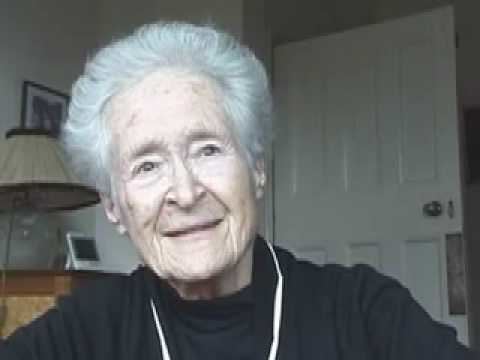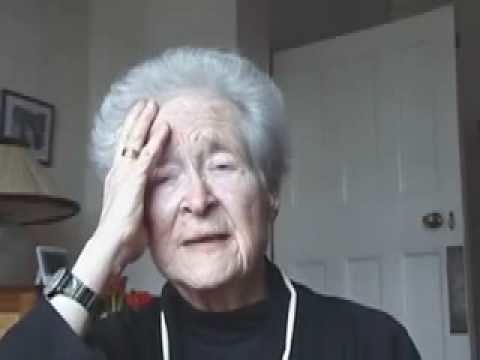Nationality British Name Mary Douglas Influences Emile Durkheim | Role Anthropologist | |
Born Margaret Mary Tew25 March 1921Sanremo ( 1921-03-25 ) Institutions Education University of Oxford, St Anne's College, Oxford Books Purity and Danger, Natural Symbols, Risk and Culture: An Essay on, The World of Goods: Towards, Risk and Blame Similar People Aaron Wildavsky, Emile Durkheim, James George Frazer, Phyllis Kaberry, Peter Brown | ||
Doctoral advisor E. E. Evans-Pritchard | ||
Mary douglas on her biography
Dame Mary Douglas, DBE, FBA (25 March 1921 – 16 May 2007) was a British anthropologist, known for her writings on human culture and symbolism, whose area of speciality was social anthropology. Douglas was considered a follower of Émile Durkheim and a proponent of structuralist analysis, with a strong interest in comparative religion.
Contents
- Mary douglas on her biography
- Interview with mary douglas february 2006 part 1
- Biography
- Contributions to anthropology
- Works
- References

Interview with mary douglas february 2006 part 1
Biography

She was born as Margaret Mary Tew in San Remo, Italy, to Gilbert and Phyllis (née Twomey) Tew. Her father was in the British colonial service. Her mother was a devout Roman Catholic, and Mary and her younger sister, Patricia, were raised in that faith. After their mother's death, the sisters were raised by their maternal grandparents and attended the Roman Catholic Sacred Heart Convent in Roehampton. Mary went on to study at St. Anne's College, Oxford, from 1939 to 1943; there she was influenced by E. E. Evans-Pritchard.
She worked in the British Colonial Office, here she encountered many social anthropologists. In 1946, Douglas returned to Oxford to take a "conversion" course in anthropology and registered for the doctorate in anthropology in 1949. She studied with M. N. Srinivas as well as E. E. Evans-Pritchard. In 1949 she did field work with the Lele people in what was then the Belgian Congo; this took her to village life in the region between the Kasai River and the Loange River, where the Lele lived on the edge of what had previously been the Kuba Kingdom. Ultimately, a civil war prevented her from continuing her fieldwork, but nevertheless, this led to Douglas' first publication, The Lele of the Kasai, published in 1963.
In the early 1950s, she completed her doctorate and married James Douglas. Like her, he was a Catholic and had been born into a colonial family (in Simla, while his father served in the Indian army). They would have three children. She taught at University College, London, where she remained for around 25 years, becoming Professor of Social Anthropology.
Her reputation was established by her most celebrated book, Purity and Danger (1966).
She wrote The World of Goods (1978) with an econometrician, Baron Isherwood, which was considered a pioneering work on economic anthropology.
She taught and wrote in the United States for 11 years. She published on such subjects as risk analysis and the environment, consumption and welfare economics, and food and ritual, all increasingly cited outside anthropology circles. After four years (1977–81) as Foundation Research Professor of Cultural Studies at the Russell Sage Foundation in New York, she moved to Northwestern University as Avalon Professor of the Humanities with a remit to link the studies of theology and anthropology, and spent three years at Princeton University. She received an honorary doctorate from the Faculty of Humanities at Uppsala University, Sweden in 1986. In 1988 she returned to Britain, where she gave the Gifford Lectures in 1989.
In 1989 she was elected a Fellow of the British Academy. She became a Commander of the Order of the British Empire (CBE) in 1992, and was appointed Dame Commander of the Order of the British Empire (DBE) in the Queen's New Year's Honours List published on 30 December 2006. She died on 16 May 2007 in London, aged 86, from complications of cancer, survived by her three children. Her husband died in 2004.
Contributions to anthropology
Douglas' book Purity and Danger (first published 1966) is an analysis of the concepts of ritual purity and pollution in different societies and times, and is considered a key text in social anthropology.
In Natural Symbols (first published 1970), Douglas introduced the interrelated concepts of "group" (how clearly defined an individual's social position is as inside or outside a bounded social group) and "grid" (how clearly defined an individual's social role is within networks of social privileges, claims and obligations). The group-grid pattern was to be refined and redeployed in laying the foundations of Cultural Theory.
Mary Douglas is also known for her interpretation of the book of Leviticus, and for her role in creating the Cultural Theory of risk.
